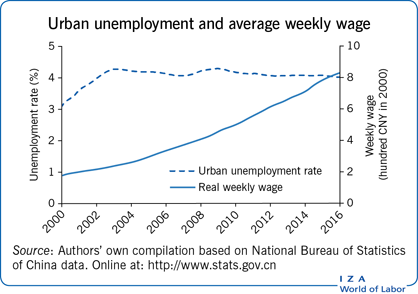Elevator pitch
China experienced significant economic progress over the past few decades with an annual average GDP growth of approximately 10%. Population expansion has certainly been a contributing factor, but that is now changing as China rapidly ages. Rural migrants are set to play a key role in compensating for future labor shortages, but inequality is a major issue. Evidence shows that rural migrants have low-paying and undesirable jobs in urban labor markets, which points to inefficient labor allocation and discrimination that may continue to impede rural–urban migration.

Key findings
Pros
Unemployment is at its lowest level in 20 years, implying that the Chinese economy is close to full employment.
The youth labor force is abundant in rural areas and should serve as an important factor in dealing with China’s aging population.
Real earnings for both rural migrants and urban residents increased over the last 20 years.
Cons
China’s population is aging rapidly, which will strain public finances.
Due to a low proportion of youth, the working-age population may decrease in the future.
Governmental policy divides rural and urban workers into two tiers in urban areas; rural migrants earn less, have higher unemployment rates, and are not eligible for many social benefits, which impedes rural–urban migration.
The labor force in China is more expensive than in many other developing countries, and numerous foreign firms have relocated their operations outside of China as a result.